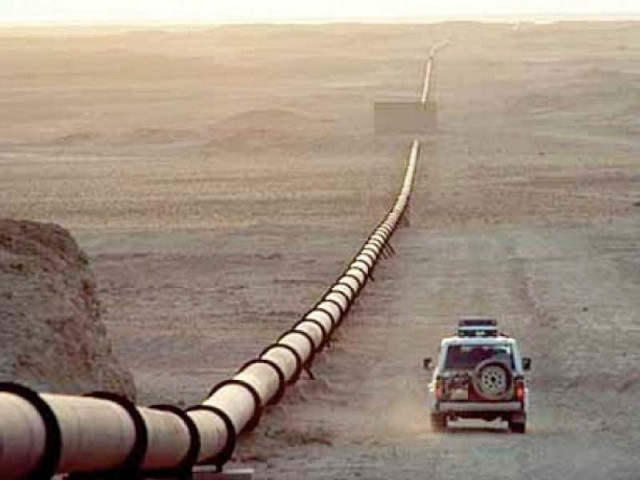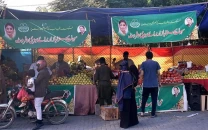Gas price hike notified
Power rates increased as well on account of Sept 2023 FCA

Pakistan’s gas and power regulators on Wednesday jacked up the prices of the two significant necessities, making life further difficult for the inflation-hit people of the country.
The Oil and Gas Regulatory Authority (Ogra) notified a substantial increase in the prices of natural gas effective from November 1 this year, “in accordance with the policy guidelines of the federal government” -- meeting yet another condition set by the International Monetary Fund (IMF) for the release of its $710 million second tranche.
While the tariff for protected consumers, who make up 57% of the domestic users, remains unchanged, there has been a significant adjustment in the fixed monthly charges for this category -- from the existing Rs10 to Rs400 per month. This will jump the annual bill of this category by up to 150%.
For non-protected consumers, the charges have been divided into two slabs. The first category, using up to 1.5 cubic hectometers (hm3), has seen an increase from Rs460 to Rs1,000. For the second category, using above 1.5 hm3, the rate has been raised from Rs460 to Rs2,000.
For residential consumers who are not protected, a significant increase has been notified in gas rates. The rates will rise by 50% to Rs300 per metric million British thermal unit (mmbtu) for consumption of up to 0.25 hm3, double to Rs600 per mmbtu for up to 0.6 hm3, and surge by 150% to Rs1,000 for up to 1 hm3.
Read Gas tariff hike to fuel inflation
A substantial hike of 173% was made in the slab of those using up to 3 hm3, where the prices will skyrocket to Rs3,000 per mmbtu from the current Rs1,100.
The tariff for bulk consumption has been increased by a quarter from Rs1,600 per mmbtu to Rs2,000.
However, the special commercial category (tandoors) will remain unchanged at Rs697 per mmbtu.
For commercial consumers, a significant tariff hike of over 136% was notified, raising the rate to Rs3,900 per mmbtu.
Cement factories and CNG stations have been subjected to an increase of more than 193% and 144%, respectively, bringing the tariff to Rs4,400.
The tariff for export industries has been increased by 86% to Rs2,050 per mmbtu. For non-export industries, the tariff has been jacked up by 117% to Rs2,600.
The interim federal government, under section 7(1) 8(3) and 21(2)(h ) of the Ogra Ordinance, 2002, advised the revised category-wise natural gas sale prices to the authority to notify them.
The statement read that the federal government had the sole jurisdiction to fix prices for different categories of consumers of natural gas considering the socio-economic agenda and sector-wise policies while making adjustments in cross subsidy as well as development surcharge.
On October 23, the interim cabinet approved a substantial hike of up to 194% in natural gas prices, which has been implemented from November 1.
Ogra in its statement said the country’s gas reserves were depleting at a very fast pace, which was 5% to 7% annually.
Every year, the gas basket is becoming more dominated by expensive imported fuel.
The drastic devaluation of rupee against dollar has increased the cost of gas.
The general inflation has jacked up the cost of gas exploration, production, distribution and transmission.
The statement read that the previous governments had retained the control of pricing a scarce resource instead of strengthening the regulator and creating strong internal controls in the system for transparency as well as efficiency.
It added that inadequate gas pricing in the previous governments and the lack of financing for the imported gas diversion over the years dented the national exchequer and created a circular debt stock of Rs2.1 trillion – that was without interest.
Ogra further stated that in the name of affordability, some of the most profitable businesses of the country were availing natural gas at the cheapest prices.
This has unduly enriched certain sectors while depriving the lowest income class including poor farmers and small-scale industries of natural gas at affordable prices, it continued.
According to the statement, the pricing decision has been a very difficult one for the caretaker government.
The affordability objective had a major clash with the sustainability argument of the supply chain.
“It is known that we are under the IMF programme, which has abolished subsidies of all sorts,” it read.
Read more After much ado, increase in gas rates approved
Ogra pointed out that the prices increased in January 2023 were the first hike in the last 2.5 years. This inadequate action resulted in an increase of Rs461 billion in FY 22-23 only.
“In case the caretaker government does not proceed to increase prices as per Ogra’s advice and fund the RLNG [regassified liquefied natural gas] diversion to [the] domestic segment in [the] absence of subsidies, there shall be a further addition in circular debt of around Rs400 billion,” the statement added.
Similarly, the National Electric Power Regulatory Authority (Nepra) notified an increase of Rs0.40 per unit in the electricity prices on account of fuel cost adjustment (FCA) for the month of September 2023.
According to statement issued by Nepra, the hike in tariff is for a month only and power consumers will have to make the additional payments in their bills for November.
It added that the increase in electricity tariff would be applicable to all consumer categories except lifeline ones and K-Electric users.



















COMMENTS
Comments are moderated and generally will be posted if they are on-topic and not abusive.
For more information, please see our Comments FAQ